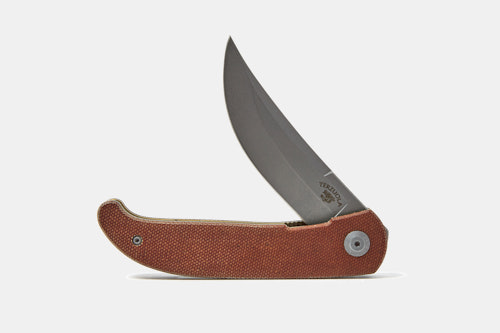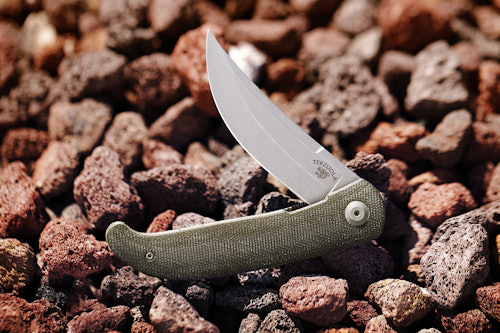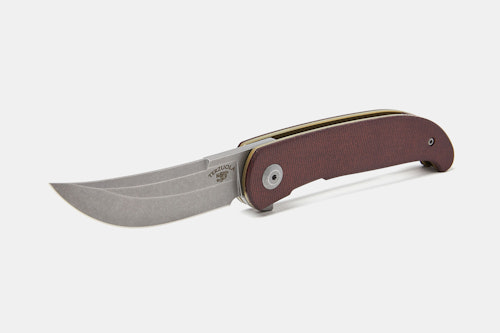Click to view our Accessibility Statement or contact us with accessibility-related questions
 VIEW 5 MORE
VIEW 5 MORE



Drop + Terzuola Cyrus Persian Folding Knife
Drop + Terzuola Cyrus Persian Folding Knife
bookmark_border
Where's the price?
To negotiate the best possible price for our customers, we agree to hide prices prior to logging in.
455 requests
·
Free Returns in USA
Product Description
Our second collaboration with Bob Terzuola—known as the godfather of the tactical folder—the Cyrus takes its name from Cyrus the Great, the founder of the first Persian Empire. Based on Terzuola’s custom design, our version is about 1.8 inches shorter to save pocket space Read More
Want to know something about this product or how to use it?
Ask the community!
Ask the community!
Sort by: Newest
keyboard_arrow_down
Axeguy
1372
Apr 27, 2020
Don't let the sweeping curve of this blade deter you from buying it. Since it's not a recurve, you can generally use any means you would normally use to repair then regrind or just hone an edge. If using a flat stone (with water or oil, as recommended), you just need to keep the angle steady while continually sweeping the edge (in contact with the stone) through your stroke. Many prefer the simplicity of flat or cylindrical ceramic rods or even a simple Lansky system with small plates or stones. If you can sharpen a straight blade, you can finesse the same techniques for the Persian blade shape.
It is important to strop—with or without compound—to further refine your honing or shaping of your edge and also taming any burr left behind. Always strop away from the edge (otherwise, you will gouge chunks out of your strop, thus ruining it).
Only recurve blades (concave curve vs. convex) require a different approach, like convex-curved Lansky stones but—even then—cylindrical ceramic rods do the trick nicely (ex. Spyderco's Sharpmaker).

GaryZero
57
Jun 23, 2020
I feel the same way too nice to scar up for me. Doesn’t feel or look like a daily user?
faintlymacabre
6
Jun 10, 2020
What colour is the clip on the marbled carbon version? Blue, like the liners?

KingG8r
10
Jun 12, 2020
Yes, it is anodized blue line the liners. If you search TERZUOLA CYRUS on YouTube there is a nice close up video of it. Beautiful knife.

Stephenw
14
Dec 19, 2019
There are three distinct grinds to the side of the blade. One is a hollowed bevel that runs the length of the blade, one below it for the edge and one above it for the false edge. It's easiest to see this on some of the review pictures of the CF model with the satin blade rather than the stonewash
krzysztof_lazar
0
May 8, 2020
Hi. I live in Poland. How much is the package with this knife to Poland?
niko1966@op.pl




